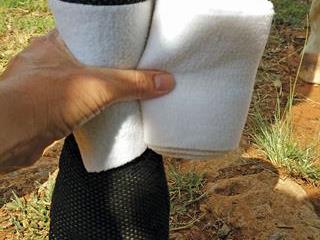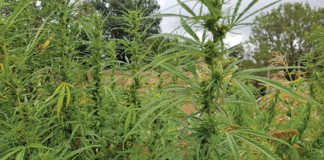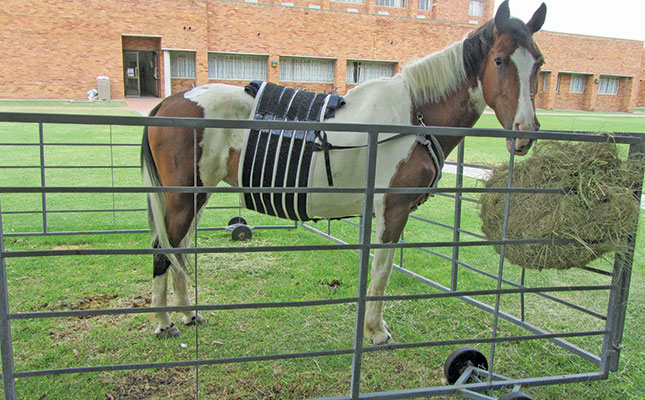
In the previous issue of Farmer’s Weekly (18 March 2016), Dr Mac described the correct way to apply a tail bandage. This week, I want to discuss leg wraps. As with tail bandages, you can do irreparable harm if you do not apply them properly. To begin with, you could damage the horse’s tendons and weaken the leg.
Unfortunately, leg wraps seem to be applied the wrong way more often than the correct way. The best leg wrap is a combination of cotton pads and soft-wrapped (stretchable) bandage or suitable cloth. Together, they protect and support the horse’s leg during transport. However, they are also the most likely to cause injury if not applied correctly.
Two common mistakes are made when applying a leg wrap:
- Not having enough cotton under the bandage. Good padding acts as a buffer between the leg and uneven bandaging or wraps that are too tight.
- Using a bandage that is too elastic. This might be easier to apply without wrinkles, but should be avoided. If you pull it too tightly while wrapping a leg, it will act like a tourniquet and cut off the blood supply.
During work or transport, the horse’s leg swells, resulting in even more pressure and damage. In other words, the amount of harm done is directly related to the amount of time the ill-fitting wrap is worn. Even the ligament fibres can suffer long-term damage, necessitating months of rest and rehabilitation. But the sad truth is that they often do not heal completely, ending your horse’s career. An ultrasound will be required to ascertain the full extent of the injuries.
The best way of learning to apply a leg wrap is to have someone experienced show you how. Practise the technique on your own, making sure your horse is comfortable with the new wraps before exercising it or transporting it in a box.
Valuable tips
- Every fabric has its own tension. Make sure your wraps are always cut from the same cloth. In addition, never allow someone else to help you wrap legs; you will each apply a different tension.
- Make sure the padding is thick and the wrap is the right size. The padding must be smooth and protrude from the top and bottom of the wrapped area. Apply the padding firmly and avoid wrinkles.
- Roll the Velcro over itself. Then unroll the bandage away from the head around the back of the leg. Apply even tension up and down the leg as you wind the wrap over the cotton. Start on the inside of the horse’s leg, below the knee, and wrap forward over the cannon bone. Overlap each layer of the bandage by 2cm to 2,5cm.
- Once finished, flick your fingers along the length of the wrap, listening for a solid sound over all parts. If you hear a ‘mushy’ sound anywhere, the wrap has not been applied evenly and should be redone. (If any of this is confusing, ask an experienced person for help!)
Fit properly, or not at all!
If you are not confident about your wrapping skills, consider using pre-made boxing boots with Velcro straps. Make sure they fit comfortably, but are unable to slide off while the horse is in the box.
Leg protection is especially important if you are transporting your horse with other horses that might kick them during travel. If your horse is travelling alone, leg protection is not as important. But an unforeseen accident can be devastating on unprotected legs, so if this protection can be fitted properly and the horse is prepared to wear them without skittishness, then use them. If not, leave them off.













